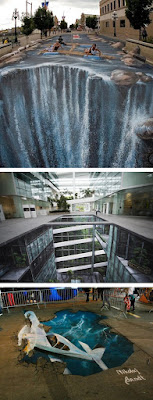Her face is serene. His face is majestic, yet gentle.
 |
| “Portrait of a Woman with a Winged Bonnet” c. 1435. Rogier van der Weyden. (Berlin State Museums, Berlin) |
These are descriptions of the ideal, and can be applied to the face of the Virgin Mary and the face of our Lord, Jesus Christ, as depicted by artists throughout the ages. They were intentionally painted this way, and attempted to give the viewer a sense, albeit foggy, of the piety of the one who bore God, and the majesty of God Himself. The visage of an average man would not do. It could not do. The artist strove to push beyond the mundane to the sublime. But those faces weren’t real.
It is a difficult pill to swallow for Classical artists, that in striving for something greater they ultimately arrived at something less. The faces of Christ and the Virgin Mary are often plastic. They are not of this world. I suppose that was the point.
 |
| “Portrait of a Lady” c. 1460 Rogier van der Weyden. (National Gallery of Art, Washington D.C.) |
I have always been taken by van der Weyden’s “Portrait of a Woman with a Winged Bonnet.” If the viewer can possibly ignore her beautifully-tailored frock and voluminous headpiece, he might get a glimpse of the gal down the street or the one tending the cash register at the grocery store. Her gaze is informal and nonchalant. The smile out-does Mona Lisa’s by a mile and a half.
Another portrait by van der Weyden, “Portrait of a Lady,” would have us believe the artist was leaning a bit too far toward plastic and needed a reality check. There is a definite lack of life in this gal. Perhaps the artist was taken by the sitter and worked the painting past its prime. Perhaps she was annoyed at having to sit at all. It smacks of someone with a life, and sitting for an artist was not at the top of her itinerary. Still, there are hints that a real person sat for van der Weyden – the pronounced lower lip, the squared jaw, and a couple of delicate eyelashes deny any sense of idealized beauty and counterbalance her unresponsive eyes.
 |
| “A Woman”1435. Robert Campin. (The National Gallery, London) |
Robert Campin brings us back to reality with “A Woman.” Copious amounts of fabric frame the visage of this woman who, I am sure, sits across the aisle from me at church. It is somehow pleasant and unnerving that we look at a real person in time, rendered so lovingly, and knowing it is entirely accurate and true to the person – without us having a clue at all.
The trick of mastering the face, as good portraitists know, is not in the tip of the nose or in the color of the eyes. The delicate nuances of facial character are found in more unlikely places – the corners of the mouth; the outer edges of the eyes; the shallow above the chin; the cheek line. It is found in spaces between the features. The artist at this point must be razor-sharp in observing, because the tolerance of spatial distance between features is nil. Move an eyebrow a fraction of an inch, and the portrait becomes someone else. This radical intolerance within the face is the bane of inexperienced artists, a wonder of creation, and proof that we are all unique and very special in God’s eyes.




